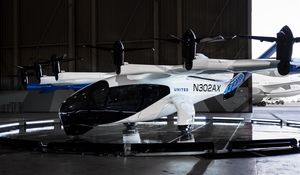
The landscape of artificial intelligence is undergoing a profound transformation, shifting from predominantly centralized cloud-based processing to a decentralized model where AI algorithms and models operate directly on local "edge" devices. This paradigm, known as Edge AI, is not merely an incremental advancement but a fundamental re-architecture of how intelligence is delivered and consumed. Its burgeoning impact is creating an unprecedented ripple effect across the semiconductor industry, dictating new design imperatives and skyrocketing demand for specialized chips optimized for real-time, on-device AI processing. This strategic pivot promises to unlock a new era of intelligent, efficient, and secure devices, fundamentally altering the fabric of technology and society.
The immediate significance of Edge AI lies in its ability to address critical limitations of cloud-centric AI: latency, bandwidth, and privacy. By bringing computation closer to the data source, Edge AI enables instantaneous decision-making, crucial for applications where even milliseconds of delay can have severe consequences. It reduces the reliance on constant internet connectivity, conserves bandwidth, and inherently enhances data privacy and security by minimizing the transmission of sensitive information to remote servers. This decentralization of intelligence is driving a massive surge in demand for purpose-built silicon, compelling semiconductor manufacturers to innovate at an accelerated pace to meet the unique requirements of on-device AI.
The Technical Crucible: Forging Smarter Silicon for the Edge
The optimization of chips for on-device AI processing represents a significant departure from traditional computing paradigms, necessitating specialized architectures and meticulous engineering. Unlike general-purpose CPUs or even traditional GPUs, which were initially designed for graphics rendering, Edge AI chips are purpose-built to execute already trained AI models (inference) efficiently within stringent power and resource constraints.
A cornerstone of this technical evolution is the proliferation of Neural Processing Units (NPUs) and other dedicated AI accelerators. These specialized processors are designed from the ground up to accelerate machine learning tasks, particularly deep learning and neural networks, by efficiently handling operations like matrix multiplication and convolution with significantly fewer instructions than a CPU. For instance, the Hailo-8 AI Accelerator delivers up to 26 Tera-Operations Per Second (TOPS) of AI performance at a mere 2.5W, achieving an impressive efficiency of approximately 10 TOPS/W. Similarly, the Hailo-10H AI Processor pushes this further to 40 TOPS. Other notable examples include Google's (NASDAQ: GOOGL) Coral Dev Board (Edge TPU), offering 4 TOPS of INT8 performance at about 2 Watts, and NVIDIA's (NASDAQ: NVDA) Jetson AGX Orin, a high-end module for robotics, delivering up to 275 TOPS of AI performance within a configurable power envelope of 15W to 60W. Qualcomm's (NASDAQ: QCOM) 5th-generation AI Engine in its Robotics RB5 Platform delivers 15 TOPS of on-device AI performance.
These dedicated accelerators contrast sharply with previous approaches. While CPUs are versatile, they are inefficient for highly parallel AI workloads. GPUs, repurposed for AI due to their parallel processing, are suitable for intensive training but for edge inference, dedicated AI accelerators (NPUs, DPUs, ASICs) offer superior performance-per-watt, lower power consumption, and reduced latency, making them better suited for power-constrained environments. The move from cloud-centric AI, which relies on massive data centers, to Edge AI significantly reduces latency, improves data privacy, and lowers power consumption by eliminating constant data transfer. Experts from the AI research community have largely welcomed this shift, emphasizing its transformative potential for enhanced privacy, reduced latency, and the ability to run sophisticated AI models, including Large Language Models (LLMs) and diffusion models, directly on devices. The industry is strategically investing in specialized architectures, recognizing the growing importance of tailored hardware for specific AI workloads.
Beyond NPUs, other critical technical advancements include In-Memory Computing (IMC), which integrates compute functions directly into memory to overcome the "memory wall" bottleneck, drastically reducing energy consumption and latency. Low-bit quantization and model compression techniques are also essential, reducing the precision of model parameters (e.g., from 32-bit floating-point to 8-bit or 4-bit integers) to significantly cut down memory usage and computational demands while maintaining accuracy on resource-constrained edge devices. Furthermore, heterogeneous computing architectures that combine NPUs with CPUs and GPUs are becoming standard, leveraging the strengths of each processor for different tasks.
Corporate Chessboard: Navigating the Edge AI Revolution
The ascendance of Edge AI is profoundly reshaping the competitive landscape for AI companies, tech giants, and startups, creating both immense opportunities and strategic imperatives. Companies that effectively adapt their semiconductor design strategies and embrace specialized hardware stand to gain significant market positioning and strategic advantages.
Established semiconductor giants are at the forefront of this transformation. NVIDIA (NASDAQ: NVDA), a dominant force in AI GPUs, is extending its reach to the edge with platforms like Jetson. Qualcomm (NASDAQ: QCOM) is a strong player in the Edge AI semiconductor market, providing AI acceleration across mobile, IoT, automotive, and enterprise devices. Intel (NASDAQ: INTC) is making significant inroads with Core Ultra processors designed for Edge AI and its Habana Labs AI processors. AMD (NASDAQ: AMD) is also adopting a multi-pronged approach with GPUs and NPUs. Arm Holdings (NASDAQ: ARM), with its energy-efficient architecture, is increasingly powering AI workloads on edge devices, making it ideal for power-constrained applications. TSMC (Taiwan Semiconductor Manufacturing Company) (NYSE: TSM), as the leading pure-play foundry, is an indispensable player, fabricating cutting-edge AI chips for major clients.
Tech giants like Google (NASDAQ: GOOGL), Amazon (NASDAQ: AMZN) (with its Trainium and Inferentia chips), and Microsoft (NASDAQ: MSFT) (with Azure Maia) are heavily investing in developing their own custom AI chips. This strategy provides strategic independence from third-party suppliers, optimizes their massive cloud and edge AI workloads, reduces operational costs, and allows them to offer differentiated AI services. Edge AI has become a new battleground, reflecting a shift in industry focus from cloud to edge.
Startups are also finding fertile ground by providing highly specialized, performance-optimized solutions. Companies like Hailo, Mythic, and Graphcore are investing heavily in custom chips for on-device AI. Ambarella (NASDAQ: AMBA) focuses on all-in-one computer vision platforms. Lattice Semiconductor (NASDAQ: LSCC) provides ultra-low-power FPGAs for near-sensor AI. These agile innovators are carving out niches by offering superior performance per watt and cost-efficiency for specific AI models at the edge.
The competitive landscape is intensifying, compelling major AI labs and tech companies to diversify their hardware supply chains. The ability to run more complex AI models on resource-constrained edge devices creates new competitive dynamics. Potential disruptions loom for existing products and services heavily reliant on cloud-based AI, as demand for real-time, local processing grows. However, a hybrid edge-cloud inferencing model is likely to emerge, where cloud platforms remain essential for large-scale model training and complex computations, while edge AI handles real-time inference. Strategic advantages include reduced latency, enhanced data privacy, conserved bandwidth, and operational efficiency, all critical for the next generation of intelligent systems.
A Broader Canvas: Edge AI in the Grand Tapestry of AI
Edge AI is not just a technological advancement; it's a pivotal evolutionary step in the broader AI landscape, profoundly influencing societal and economic structures. It fits into a larger trend of pervasive computing and the Internet of Things (IoT), acting as a critical enabler for truly smart environments.
This decentralization of intelligence aligns perfectly with the growing trend of Micro AI and TinyML, which focuses on developing lightweight, hyper-efficient AI models specifically designed for resource-constrained edge devices. These miniature AI brains enable real-time data processing in smartwatches, IoT sensors, and drones without heavy cloud reliance. The convergence of Edge AI with 5G technology is also critical, enabling applications like smart cities, real-time industrial inspection, and remote health monitoring, where low-latency communication combined with on-device intelligence ensures systems react in milliseconds. Gartner predicts that by 2025, 75% of enterprise-generated data will be created and processed outside traditional data centers or the cloud, with Edge AI being a significant driver of this shift.
The broader impacts are transformative. Edge AI is poised to create a truly intelligent and responsive physical environment, altering how humans interact with their surroundings. From healthcare (wearables for early illness detection) and smart cities (optimized traffic flow, public safety) to autonomous systems (self-driving cars, factory robots), it promises smarter, safer, and more responsive systems. Economically, the global Edge AI market is experiencing robust growth, fostering innovation and creating new business models.
However, this widespread adoption also brings potential concerns. While enhancing privacy by local processing, Edge AI introduces new security risks due to its decentralized nature. Edge devices, often in physically accessible locations, are more susceptible to physical tampering, theft, and unauthorized access. They typically lack the advanced security features of data centers, creating a broader attack surface. Privacy concerns persist regarding the collection, storage, and potential misuse of sensitive data on edge devices. Resource constraints on edge devices limit the size and complexity of AI models, and managing and updating numerous, geographically dispersed edge devices can be complex. Ethical implications, such as algorithmic bias and accountability for autonomous decision-making, also require careful consideration.
Comparing Edge AI to previous AI milestones reveals its significance. Unlike early AI (expert systems, symbolic AI) that relied on explicit programming, Edge AI is driven by machine learning and deep learning models. While breakthroughs in machine learning and deep learning (cloud-centric) democratized AI training, Edge AI is now democratizing AI inference, making intelligence pervasive and embedded in everyday devices, operating at the data source. It represents a maturation of AI, moving beyond solely cloud-dependent models to a hybrid ecosystem that leverages the strengths of both centralized and distributed computing.
The Horizon Beckons: Future Trajectories of Edge AI and Semiconductors
The journey of Edge AI and its symbiotic relationship with semiconductor design is only just beginning, with a trajectory pointing towards increasingly sophisticated and pervasive intelligence.
In the near-term (1-3 years), we can expect wider commercial deployment of chiplet architectures and heterogeneous integration in AI accelerators, improving yields and integrating diverse functions. The rapid transition to smaller process nodes, with 3nm and 2nm technologies, will become prevalent, enabling higher transistor density crucial for complex AI models; TSMC (NYSE: TSM), for instance, anticipates high-volume production of its 2nm (N2) process node in late 2025. NPUs are set to become ubiquitous in consumer devices, including smartphones and "AI PCs," with projections indicating that AI PCs will constitute 43% of all PC shipments by the end of 2025. Qualcomm (NASDAQ: QCOM) has already launched platforms with dedicated NPUs for high-performance AI inference on PCs.
Looking further into the long-term (3-10+ years), we anticipate the continued innovation of intelligent sensors enabling nearly every physical object to have a "digital twin" for optimized monitoring. Edge AI will deepen its integration across various sectors, enabling real-time patient monitoring in healthcare, sophisticated control in industrial automation, and highly responsive autonomous systems. Novel computing architectures, such as hybrid AI-quantum systems and specialized silicon hardware tailored for BitNet models, are on the horizon, promising to accelerate AI training and reduce operational costs. Neuromorphic computing, inspired by the human brain, will mature, offering unprecedented energy efficiency for AI tasks at the edge. A profound prediction is the continuous, symbiotic evolution where AI tools will increasingly design their own chips, accelerating development and even discovering new materials, creating a "virtuous cycle of innovation."
Potential applications and use cases on the horizon are vast. From enhanced on-device AI in consumer electronics for personalization and real-time translation to fully autonomous vehicles relying on Edge AI for instantaneous decision-making, the possibilities are immense. Industrial automation will see predictive maintenance, real-time quality control, and optimized logistics. Healthcare will benefit from wearable devices for real-time health monitoring and faster diagnostics. Smart cities will leverage Edge AI for optimizing traffic flow and public safety. Even office tools like Microsoft (NASDAQ: MSFT) Word and Excel will integrate on-device LLMs for document summarization and anomaly detection.
However, significant challenges remain. Resource limitations, power consumption, and thermal management for compact edge devices pose substantial hurdles. Balancing model complexity with performance on constrained hardware, efficient data management, and robust security and privacy frameworks are critical. High manufacturing costs of advanced edge AI chips and complex integration requirements can be barriers to widespread adoption, compounded by persistent supply chain vulnerabilities and a severe global talent shortage in both AI algorithms and semiconductor technology.
Despite these challenges, experts are largely optimistic. They predict explosive market growth for AI chips, potentially reaching $1.3 trillion by 2030 and $2 trillion by 2040. There will be an intense diversification and customization of AI chips, moving away from "one size fits all" solutions towards purpose-built silicon. AI itself will become the "backbone of innovation" within the semiconductor industry, optimizing chip design, manufacturing processes, and supply chain management. The shift towards Edge AI signifies a fundamental decentralization of intelligence, creating a hybrid AI ecosystem that dynamically leverages both centralized and distributed computing strengths, with a strong focus on sustainability.
The Intelligent Frontier: A Concluding Assessment
The growing impact of Edge AI on semiconductor design and demand represents one of the most significant technological shifts of our time. It's a testament to the relentless pursuit of more efficient, responsive, and secure artificial intelligence.
Key takeaways include the imperative for localized processing, driven by the need for real-time responses, reduced bandwidth, and enhanced privacy. This has catalyzed a boom in specialized AI accelerators, forcing innovation in chip design and manufacturing, with a keen focus on power, performance, and area (PPA) optimization. The immediate significance is the decentralization of intelligence, enabling new applications and experiences while driving substantial market growth.
In AI history, Edge AI marks a pivotal moment, transitioning AI from a powerful but often remote tool to an embedded, ubiquitous intelligence that directly interacts with the physical world. It's the "hardware bedrock" upon which the next generation of AI capabilities will be built, fostering a symbiotic relationship between hardware and software advancements.
The long-term impact will see continued specialization in AI chips, breakthroughs in advanced manufacturing (e.g., sub-2nm nodes, heterogeneous integration), and the emergence of novel computing architectures like neuromorphic and hybrid AI-quantum systems. Edge AI will foster truly pervasive intelligence, creating environments that learn and adapt, transforming industries from healthcare to transportation.
In the coming weeks and months, watch for the wider commercial deployment of chiplet architectures, increased focus on NPUs for efficient inference, and the deepening convergence of 5G and Edge AI. The "AI chip race" will intensify, with major tech companies investing heavily in custom silicon. Furthermore, advancements in AI-driven Electronic Design Automation (EDA) tools will accelerate chip design cycles, and semiconductor manufacturers will continue to expand capacity to meet surging demand. The intelligent frontier is upon us, and its hardware foundation is being laid today.
This content is intended for informational purposes only and represents analysis of current AI developments.
TokenRing AI delivers enterprise-grade solutions for multi-agent AI workflow orchestration, AI-powered development tools, and seamless remote collaboration platforms.
For more information, visit https://www.tokenring.ai/.






